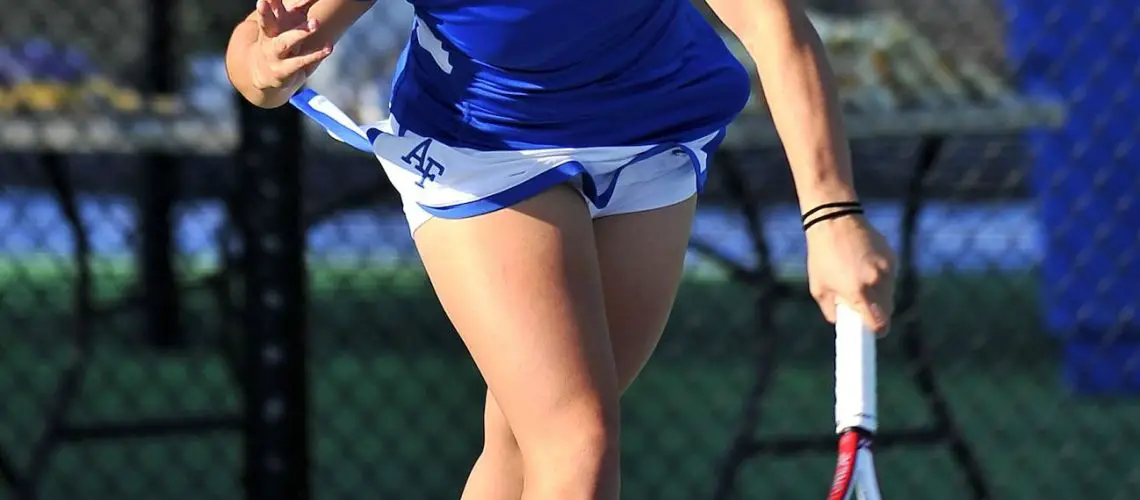We may earn money or products from the companies mentioned in this post.
Introduction

Tennis is a game of skill, strategy, and precision Every aspect of the sport, from the player’s technique to the equipment they use, plays a crucial role in their performance on the court One such important factor is swingweight Swingweight refers to the overall feel and maneuverability of a tennis racket during a swing It determines how heavy or light the racket feels when swung and can significantly impact a player’s performance In this article, we will explore what swingweight means in tennis, its importance, and the factors that influence it
Definition of Swingweight Tennis
Swingweight in tennis refers to the measurement of a racket’s weight distribution along its length It is determined by calculating how much force is required to swing the racket through an arc, typically around 28 inches long The unit used to measure swingweight is called “swingweight points” or “SW points” A higher swingweight indicates that more force is needed to accelerate and control the racket during swings
Importance of Swingweight in Tennis
The swingweight of a tennis racket can have a significant impact on several aspects of a player’s game Firstly, it affects power generation Rackets with higher swingweights tend to generate more power as they provide additional momentum during swings This can be advantageous for players who rely on powerful shots like serve and groundstrokes
Secondly, swingweight influences stability and control Rackets with higher swingweights offer more stability upon contact with the ball, minimizing unwanted vibrations and providing better control over shots This can help players maintain consistency and accuracy in their strokes
Lastly, swingweight affects maneuverability or how easily a player can move and change direction while holding the racket Rackets with lower swingweights are generally easier to swing and maneuver, allowing players to react quickly to different shots and move around the court with agility
Factors Influencing Swingweight
Several factors can influence the swingweight of a tennis racket One primary factor is the distribution of weight along the racket’s length Rackets with more weight concentrated towards the head have higher swingweights, while those with weight distributed evenly or towards the handle have lower swingweights
The overall weight of the racket also plays a role in determining its swingweight Heavier rackets tend to have higher swingweights, requiring more force to accelerate during swings On the other hand, lighter rackets have lower swingweights and offer increased maneuverability
Furthermore, customization options such as adding lead tape or changing grip size can also affect a racket’s swingweight Adding weight to specific areas of the racket can alter its balance and overall feel, impacting its swingweight accordingly
In conclusion, understanding swingweight in tennis is crucial for players looking to optimize their performance on the court It influences power generation, stability, control, and maneuverability – all key aspects of a player’s game By considering factors like weight distribution and overall weight when choosing or customizing a racket, players can find a balance that suits their playing style and enhances their skills on the court
How to Measure and Calculate Swingweight in Tennis

Tools and Methods for Measuring Swingweight
When it comes to measuring swingweight, there are several tools and methods you can use Let’s take a look at some of the most common options:
-
RDC machine (Racquet Diagnostic Center):
The RDC machine is a professional-grade tool used by tennis shops and racquet technicians It accurately measures swingweight by calculating the racquet’s moment of inertia -
DIY methods:
If you’re more of a do-it-yourselfer, you can use a balance beam or a swing weight scale to measure swingweight These tools require some manual calculations, but they can give you a good estimate -
Online calculators and mobile applications:
In today’s digital age, there are plenty of online calculators and mobile apps available that can help you measure your racquet’s swingweight Simply input the necessary details, such as racquet specifications and balance point, and let the app do the rest!
Components That Contribute to Swingweight Calculation
To understand how to calculate swingweight accurately, it’s essential to consider the various components that contribute to this measurement:
-
Racquet frame, string pattern, and overall length:
The design and construction of your racquet play a significant role in determining its swingweight Different materials used in the frame, string patterns, and overall length will impact how the racquet feels during each stroke -
Weight distribution: head-heavy vs head-light balance points:
Another crucial factor is the weight distribution of your racquet A head-heavy racquet will have more mass in the head, resulting in a higher swingweight Conversely, a head-light racquet will distribute more weight towards the handle, leading to a lower swingweight
Understanding how these components contribute to swingweight calculation will help you make informed decisions when choosing a tennis racquet that suits your playing style and preferences
Impact of different Swingweights on Tennis Performance

When it comes to tennis racquets, the swingweight plays a crucial role in determining a player’s performance on the court The swingweight refers to the overall weight distribution of the racquet, specifically how heavy it feels when swung Different swingweights can have varying effects on a player’s game, both positive and negative
Advantages of a higher swing weight racquet
A higher swing weight can provide several advantages for tennis players Firstly, it offers increased stability during ball impact This means that when you make contact with the ball, your racquet will remain steady and absorb more of the shock, resulting in greater control over your shots
In addition to stability, a higher swing weight also has the potential for increased power The added weight behind your swings allows you to generate more momentum and transfer that energy into powerful shots This is especially beneficial for players who rely on aggressive baseline play or serve-and-volley tactics
Furthermore, a higher swing weight often produces a better plow-through effect Plow-through refers to how well the racquet pushes through the air and maintains its speed during the stroke With a higher swing weight, you can experience improved plow-through, which leads to more consistent and penetrating shots
Disadvantages of a higher swing weight racquet
While there are advantages to using a racquet with a higher swing weight, there are also some drawbacks to consider One major disadvantage is decreased maneuverability The additional weight makes it harder to quickly change direction or execute fast-paced shots such as volleys or defensive slices
In addition to decreased maneuverability, using a heavier racquet can lead to increased fatigue over time Swinging a heavier racket requires more physical effort, which can result in players becoming fatigued earlier in a match This can impact their overall performance and consistency as the game progresses
Advantages of a lower swing weight racquet
On the other hand, opting for a racquet with a lower swing weight offers its own set of advantages One such advantage is improved maneuverability With less overall weight to swing, players can more easily change direction and execute quick shots, making it ideal for players who rely on speed and agility
Additionally, a lower swing weight makes it easier to generate racket head speed By swinging a lighter racquet, you can whip through the ball faster, resulting in increased spin potential and shot variety This can be particularly advantageous for players who prefer topspin-heavy groundstrokes or aggressive serves
Disadvantages of a lower swing weight racquet
While there are benefits to using a racquet with a lower swing weight, there are also some downsides to consider One disadvantage is lower stability upon ball impact The lighter racquet may not absorb as much shock from the ball, leading to potential inconsistencies or vibrations that could affect shot control
In addition to stability concerns, using a lighter racquet may result in potentially less powerful shots compared to heavier alternatives The reduced mass behind your swings means you may not generate as much power on your strokes, requiring you to rely more on timing and technique rather than sheer force
The Impact of Swingweights on Tennis Performance

To summarize, choosing the right swingweight for your tennis racquet is crucial for optimizing your performance on the court Higher swing weights offer increased stability during ball impact and the potential for greater power and plow-through effect However, they come with decreased maneuverability and increased fatigue over time
On the other hand, lower swing weights provide improved maneuverability and easier generation of racket head speed However, they may sacrifice stability upon ball impact and potentially result in less powerful shots Ultimately, finding the right balance between swingweight and personal playing style is key to unlocking your full potential on the tennis court
Choosing the Right Swingweight for Your Game Style

When it comes to tennis, finding the perfect racket can make a world of difference in your game One crucial factor to consider is the swingweight of your racket The swingweight refers to how heavy or light the racket feels when you swing it, and it plays a significant role in your overall performance on the court
Assessing your playing style and physical attributes
The first step in selecting the right swingweight is to assess your playing style and physical attributes Are you an aggressive baseline player who relies on powerful groundstrokes? Or perhaps you’re a serve-and-volleyer who prefers quick net play? Understanding your playing style will help determine the ideal swingweight for your game
Your physical strength, endurance, and level of experience also come into play If you have more strength and stamina, you may be able to handle a higher swingweight On the other hand, if you are relatively new to the sport or lack physical strength, a lower swingweight might be more suitable
Customizing your tennis racket’s swing weight
To fine-tune your racket’s swing weight, there are several customization options available One method is adjusting the racquet’s grip size or shape A grip that fits comfortably in your hand can enhance control and maneuverability during swings
Another option is adding lead tape strategically to modify the racket’s balance point Placing lead tape at different locations can increase or decrease the swing weight according to your preference Experimenting with different placements allows you to find what works best for you
Consulting with coaches or professionals
If you’re unsure about customizing your racket yourself, don’t hesitate to seek guidance from coaches or professionals They have the expertise to assess your game style and physical attributes accurately With their help, you can tailor your racket’s swing weight specifically to suit your needs
Trial and error approach for optimal racquet selection
Finding the perfect racket swing weight often involves a trial and error process One effective method is borrowing or demoing different rackets with various swingweights This allows you to experience firsthand how each swing weight affects your performance on the court
Consider other factors such as strings and tension as they can also influence the overall feel of your racket The combination of swing weight, strings, and tension creates a unique playing experience, so it’s essential to take all these aspects into account when selecting your racket
Continuously monitoring and adjusting your swing weight
Your game will evolve over time as you gain experience and improve your skills It’s crucial to continuously monitor and adjust your racket’s swing weight accordingly Regularly reevaluating and fine-tuning the swing weight ensures that it matches your current game style, maximizing your performance on the court
Useful Links

What is the importance of swing weight when purchasing …
Unauthorized Access
Tennis Racquet Lingo: Swing weight Explained – Blog
The Three Most Important Factors in Choosing a Tennis …
How to Choose a Tennis Racket
Search By Specifications
Briffidi SW1 Swingweight Machine Review
Racket Weight vs. Swing Weight | Which Adds More Power?
Advantage Swing Champ 5 Ounce Tennis Swing Weight
Racquet Handle Weighting and Maneuverability
SwingTool – Swing Weight on the App Store
Tennis Racket Swing Weight & Power Potential
Picking a Tennis Racquet ( Basics )
The effect of racquet swing weight on serve kinematics in …
Tennis racquet information from Do It Tennis.
SW1 Racquet Swingweight Machine
How to Choose a Tennis Racquet in 10 steps
Racquet Information
Prince Swingweight Machine






